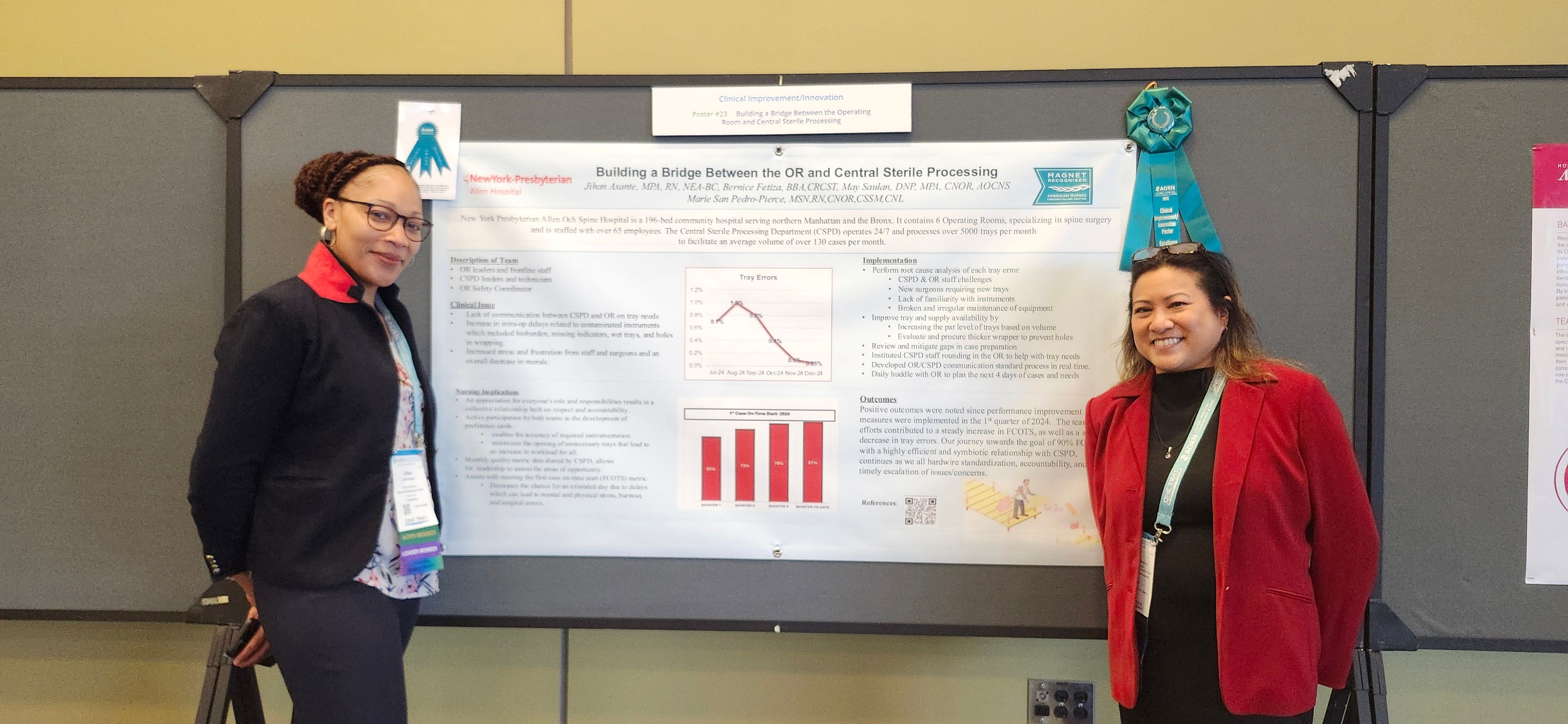Bridging the Gap: Operating Room and Central Processing Unite to Improve Surgical Efficiency
Communication breakdowns between the operating room and central processing led to delays and frustration—until collaboration, cross-training, and shared goals turned metrics around and strengthened teamwork.
Jihan Asante, MPH, RN, NEA-BC, and Marie San Pedro-Pierce, MSN, RN, CNOR, CSSM, CNL, at AORN25

In any surgical setting, seamless coordination between the operating room (OR) and the central processing department (CPD) is critical to ensuring patient safety, workflow efficiency, and staff satisfaction.
At a New York City institution, the health care workers began to observe persistent issues disrupting this synergy—delays in case setups, bioburden on instruments, incorrect or wet trays, and a general breakdown in communication. These issues not only compromised our performance metrics but also created mounting frustration among surgeons, OR staff, and CPD team members alike. Recognizing the need for urgent and collaborative change, we initiated a series of targeted interventions designed to foster communication, improve tray handling accuracy, and close the feedback loop between teams.

Jihan Asante, MPH, RN, NEA-BC, and Marie San Pedro-Pierce, MSN, RN, CNOR, CSSM, CNL, worked with their colleagues at New York Presbyterian Allen Och Spine Hospital in northern Manhattan and the Bronx on a study. Asante, the patient care director, and San Pedro-Pierce, the perio-patient safety coordinator, presented “Building a Bridge Between the Operating Room and Central Sterile Processing” as a poster at the AORN Global Surgical Conference & Expo held April 5 through 8, 2025, in Boston, Massachusetts.
Infection Control Today® spoke with Asante and San Pedro-Pierce about what inspired them to do this study.
Jihan Asante, MPH, RN, NEA-BC: The title of our poster is " Building a Bridge Between the OR and Central Sterile Processing." We chose this project because we noticed some issues in the OR regarding our metrics and the relationships between the CPD and the OR. Some challenges included a lack of communication, tray issues such as bioburden and incorrect trays being sent up, and wet trays. We also experienced extended setup times from our perioperative team, leading to frustration for everyone involved, including surgeons and our central processing team. We came together to explore how we could improve these situations.
We found that enhancing communication and closing the loop by meeting more frequently was the first step. We also conducted a trial where some of our OR team visited CPD while members of the central processing team came to observe our workflow.
Additionally, we regularly reviewed our metrics, as they are essential for our operations. We assessed our tray handling processes to ensure they benefited the central processing team. As we realized, our goal for the first case on time starts at 30 minutes for all cases and 40 to 45 minutes for our large spine cases. We discovered that we were not meeting this target; our expectation was 90%, but we were achieving only in the 50s and 60s.
However, through the dedication of both our and the central processing teams, and by collaborating with our surgeons and reviewing their preference cards to ensure accurate trays from the start, we significantly reduced tray errors. By the end of the year, we had nearly reached our goal, achieving about 88%, and we are committed to further improvement.
Uncovering a Hidden Risk: Alcohol Use Disorder Significantly Increases C difficile Infection Rates
April 10th 2025A groundbreaking study reveals a strong connection between alcohol use disorder and increased risk for Clostridioides difficile infection, challenging traditional assumptions and calling for enhanced infection prevention protocols.